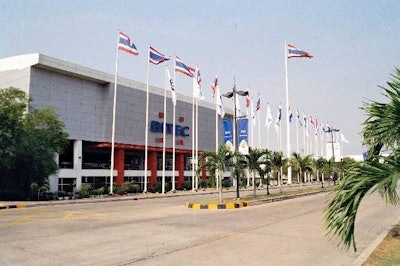
Asia’s population is increasingly wealthy, and the region’s agricultural producers are increasingly working to internationally-recognised standards. Asia could be seen as the land of opportunity, but nothing is ever that simple.
There may be money available to grow production, and a willingness to participate in international markets, but increases in output and the desire to make investment mean that making the right decisions is more important than ever. Faced with these choices, knowledge is key, and VIV Asia 2011 should help producers to fully understand the options that are available to them.
The VIV exhibitions can trace their history back to the 1970s with the first edition of VIV Europe. The first international exhibition, VIV Asia, took place in Japan in 1993. The show subsequently moved to Bangkok, Thailand, where the 10th edition of the show will take place on March 9th-11th 2011.
Surpassing expectations
VIV Asia 2011 is expected to attract some 20,000 visitors, from across the globe. While the event has always attracted a broad international audience, the next edition is expected to draw a higher-than-normal European audience, given the climate problems that made reaching 2010’s VIV Europe difficult. At the time of writing, pre-registration numbers were in excess of 15,000 from some 95 countries, while the number of exhibitors had reached 520.
The organizers believe that 2011’s edition will surpass previous editions. Not only will the range of exhibitors be more diverse, but it has been necessary to increase to the floor space to 14,000 m2, up from 12,800 m2 in 2009.
Special themes
The upcoming edition of VIV Asia will have three special themes. These will be:
- Feedtech-Croptech Asia 2011, a dedicated event for the Asia Pacific milling industries with a focus on the production of animal feeds, food and fuel. With WATT Publishing as an exclusive media partner, Feedtech-Croptech offers the ideal opportunity to pair up with investors, producers and engineers active in milling equipment and related activities;
- LAB@VIV Asia 2011, which will focus on the feed and food laboratory business in the region; and
- China Visions, an international summit for the Chinese animal production and processing industries.
Change
Catering to the needs of the integrated industry, 2011 will present a more diversified range of exhibitors due to Feedtech-Croptech and LAB, offering more choice within more price brackets.
However, these will not be the only new additions to the event. There will also be a new trade show co-located with VIV Asia 2011 – Aquatic Asia 2011.
Despite the success of Aqua VIV Asia 2007 and 2009, it was decided that, to attract more exhibitors and visitors, a separate new brand was needed, hence the decision to establish Aquatic Asia 2011. With the new brand, the organizers believe, it will be easier to capitalize on the boom in investment and production of fish and shrimps in the region.
VIV Asia 2011 will also feature more workshops, seminars and high quality conferences than ever before – more opportunities to discover trends, latest developments and learn about best practice. The last edition of the show attracted more than 3,000 attendees to these events.
Choices and decisions
VIV Asia’s organizers believe that, in light of the fact that poultry meat, fish, pig meat and dairy production needs to increase to satisfy consumer demand, there needs to be greater understanding of exactly what the market has to offer if investments are to be made properly.
To ensure the production of safe feed and food, and integrated approach should be followed that takes into account all aspects of production. VIV Asia provides not only a platform to communicate this message but also a showcase of the options that are available.
The organizers note that agricultural production is increasingly integrated and that this move has been spearheaded by retailers and contract farmers. While there are a number of businesses that are already advanced in this approach, the number expected to follow this route will increase. Suppliers from feed to meat can enjoy the benefits from the investment offered by this approach, as the major players will invest in their products to ensure that they are safe and produced in sufficient quantities.
While important, this is not the only challenge facing the industry, there is also the question of scale. Direct suppliers to our industries, with the exception of some feed suppliers, generally do not have the resources to conquer large emerging markets, such as China and India.
The changing agricultural environment does not only raise questions for the private sector, governments will also be faced with a number choices as their populations become wealthier and demand more.
There is a conflict for many countries as the pursuit of more growth in the animal husbandry sector will deplete lands that could otherwise be used to feed the population directly. Without sufficient feed supplies, however, growth in the animal husbandry sector will be held back. In addition, there is the question of clean drinking water, which could act as a constraint on animal production.
And so governments will be increasingly faced with having to decide levels for livestock production and levels of feed production each year, on land that is increasingly restricted.


















